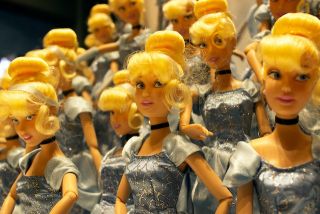Gender
A Two-Step Guide to Finding Your Kenergy
How Kenergy can add layers to the most uni-dimensional of characters.
Posted July 26, 2023 Reviewed by Lybi Ma

Greta Gerwig’s Barbie movie has already made big waves in the world of cinema, with multiple scenes and dialogues going viral and memes about its parallel release with Christopher Nolan's much-awaited Oppenheimer.
In the lead-up to the release, tidbits from behind-the-scenes and promotional interviews had also been circulating over the internet. One of the major stories that had fans in a frenzy: lead actor Margot Robbie and director Great Gerwig help actor Ryan Gosling, who plays Barbie’s friend-zoned side-kick, Ken, find his "Kenergy."
If you’re wondering what it means to have Kenergy, you’re not alone. Ever since the word has made its way into pop discourse, the internet has been buzzing with questions about identifying and finding one’s Kenergy. Guesses about what lies at the core of Kenergy include his blonde bimbo-esque vibe, his ability to not take himself too seriously and his “It’s Barbie’s world, I’m just living in it” attitude.
In a world where Barbie is and comes before everything, we see her male counterpart Ken relegated to the uni-dimensional and purely aesthetic role that women have often been confined to in the past, in a flippant and parody-like manner.
While everyone is entitled to their own definition of true Kenergy, here are the two main components that, according to me, come together to elicit “Big Ken Energy.”
1. It’s Not Un-Masculine for a Man to Let a Women Take Centerstage
Ken’s over-the-top servitude for Barbie might have a deeper and subtler truth at its core. In a universe that revolves around Barbie, Ken has only a supportive role to play, and he plays it gladly.
Society often ridicules the man who takes on a supportive role in a woman’s life because of gendered stereotypes that dictate it should always be the other way around. A man is supposed to be the protector, breadwinner, and leader in our gender-scripted reality.
Take, for instance, the case of stay-at-home husbands and fathers. Switching the norm around and having a female breadwinner in the family might raise eyebrows, but research shows that a stay-at-home role can actually change a man’s view of his own masculinity. Stay-at-home fathers, according to the study, showed an increase in their emotional connection towards others as well as heightened respect for the demanding role of a caregiver.
Ken might be the butt of all jokes, but smashing a gender stereotype without even trying is a sign of true strength. In a world where Barbie can be anything she wants to be and Ken can only be Ken, he’s happy to be along for the ride.
This is not to say that anyone should be confined to or feel strung along by their relationship. However, it isn’t necessarily a sign of shame, nor should it invite stigma, if either partner chooses to follow a path distinct from the rest.
2. It’s Not Un-Masculine for a Man to Embrace His Feminine Side
Ken’s character fully leans into his metro-sexual side, preoccupied with his appearance, his perfectly sculpted, completely hairless body, and his always-in-place blonde hair. All of his clothes are coordinated with Barbie in color and style.
Any heterosexual man who cares this deeply about his appearance and who is so unabashed about his unconventional fashion choices may invite ridicule due to society’s strict rules for masculinity. However, the character’s effortless Kenergy seems to circumvent this stigma. Being a “girl’s plaything,” it is all but expected out of him to be a part of the same world.
Unlike our reality, where, according to research, men experience anxiety, depression, and self-reproach when expressing an increase in femininity or a reduction in masculinity, Ken’s world is all about the perfect clothes, hair, and body. It’s part of the playfulness of the narrative.
Conclusion
Ken’s earnestness and loyalty towards Barbie are redemptive. Even though Ken is, as Gosling puts it, “an accessory, and not even one of the cool ones,” the character is still endearing. Being her perfect foil, it is hard to imagine Barbie without Ken. Embracing the essence of Ken can help us conjure our own Kenergy and appreciate his lovable idiosyncrasies.


